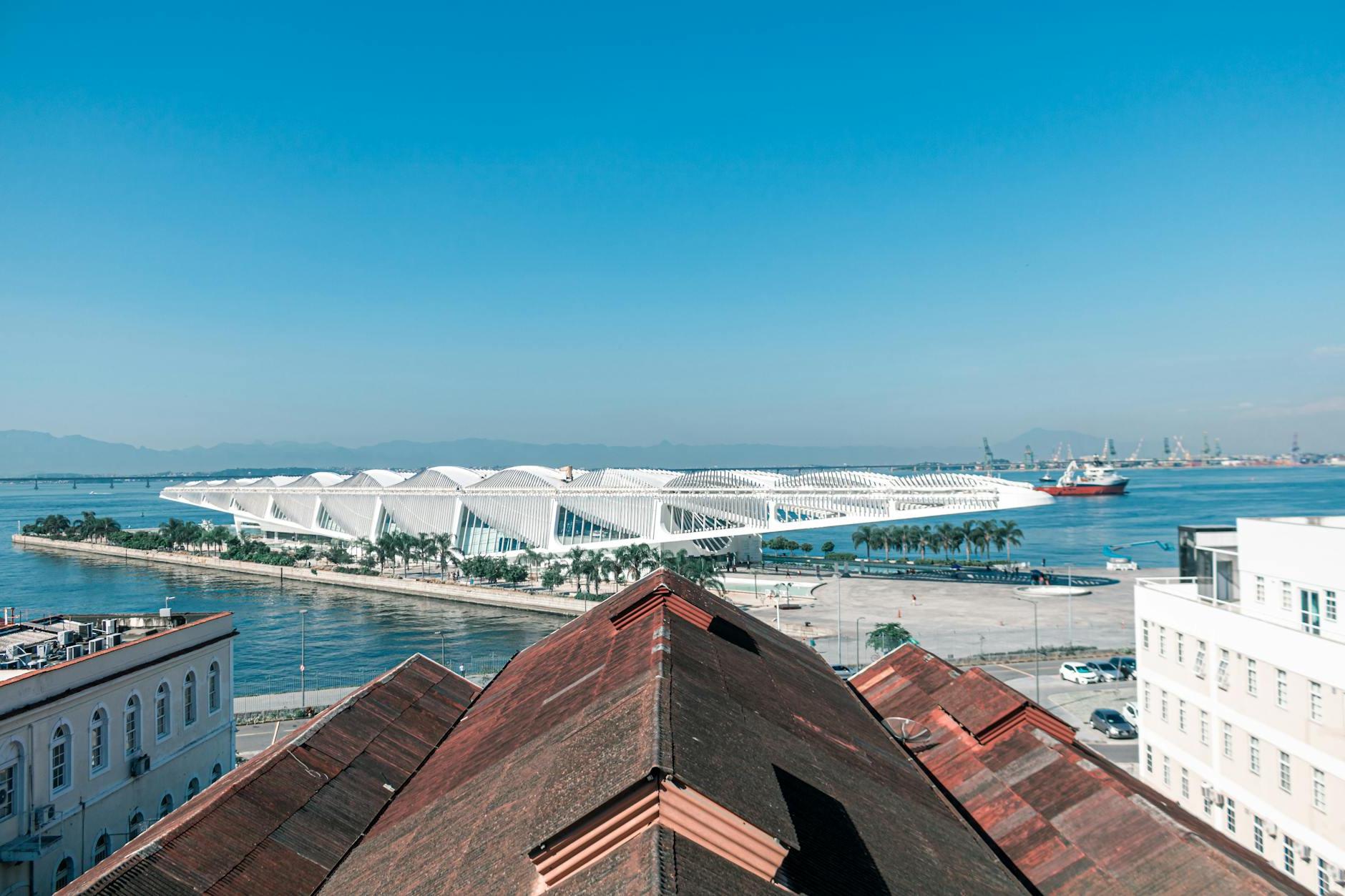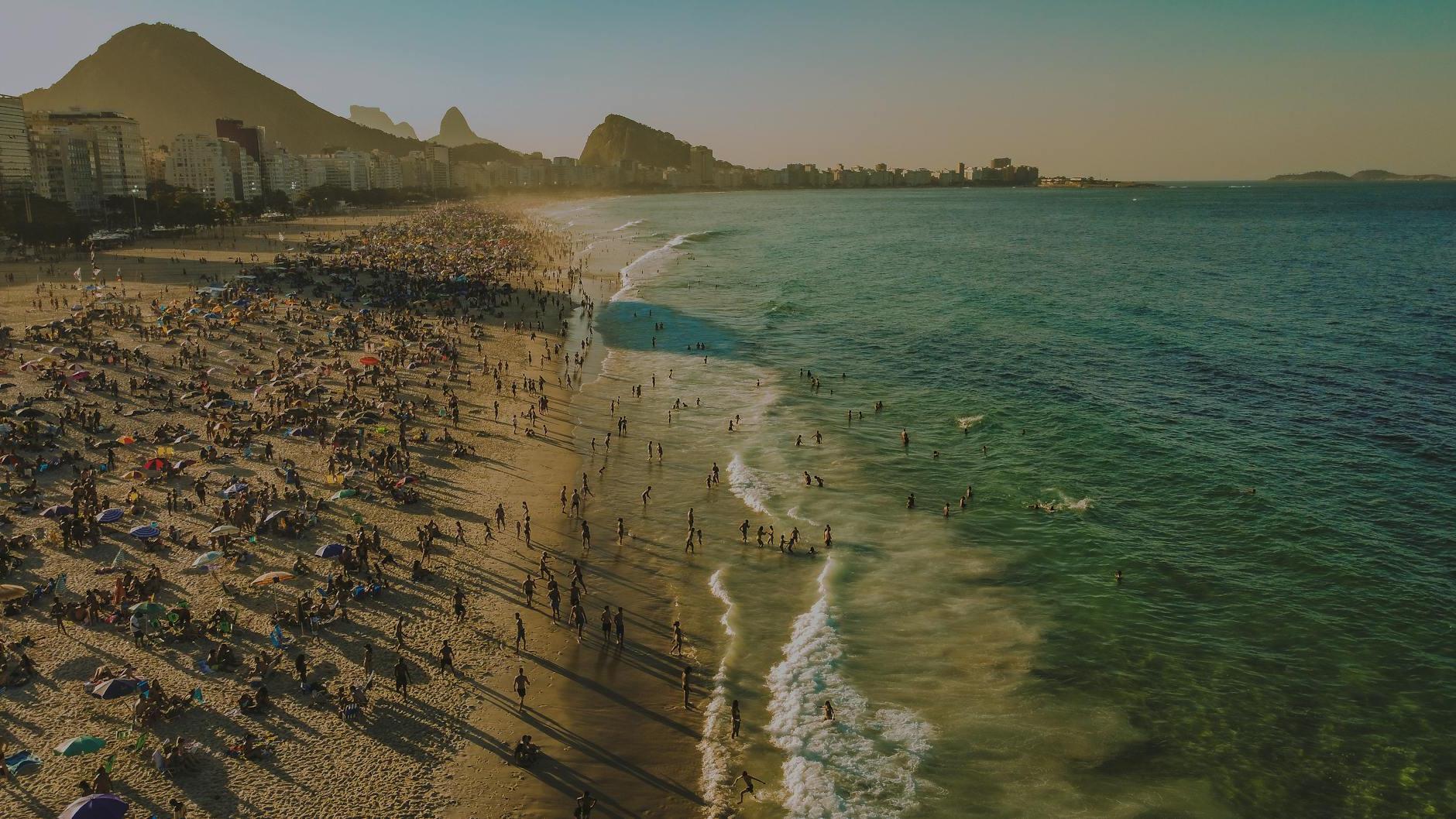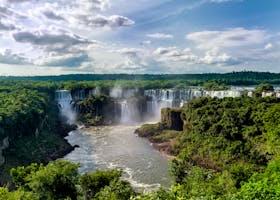Explore Rio de Janeiro: Top 10 Must-See Attractions in Brazil's Vibrant City
Posted on June 3, 2024 • 13 minutes • 2607 words
Table of contents
Welcome to the vibrant and bustling city of Rio de Janeiro, a treasure trove of cultural experiences, breathtaking landscapes, and iconic landmarks waiting to be explored. Known for its lively festivals, particularly the world-renowned Carnival, which peaks in February, Rio de Janeiro attracts visitors from across the globe. However, the city’s appeal doesn’t wane with the passing of Carnival. All year round, Rio offers a plethora of activities and sights, making any time the perfect time to visit. Whether you’re basking under the sun on the famous Copacabana Beach, marveling at the Christ the Redeemer statue, or soaking in the panoramic views from Sugarloaf Mountain, Rio de Janeiro promises an unforgettable adventure. In this article, we’ll guide you through the top 10 must-see attractions in Rio de Janeiro that you absolutely cannot miss. Get ready to immerse yourself in the heart of Brazil’s most vibrant city!
10 best things to see in Rio de Janeiro
10. Museum of Tomorrow

When visiting Rio de Janeiro, including the Museum of Tomorrow in your itinerary is a must for a truly enriching experience. Situated in the revitalized Porto Maravilha area, this museum is not just an exploration of science but a journey into the future of possibilities. Its stunning design, a work of art itself, is worth the visit, showcasing a unique blend of sustainability and technology under its innovative solar spine. To get there, you can easily catch a tram to Praça Mauá, which drops you right at the museum’s doorstep. While exploring, pay close attention to the interactive exhibits which are designed to make you think about the future of our planet and our role in shaping it. From climate change to technological advances, each exhibit offers a thought-provoking perspective, making it an unforgettable part of your Rio journey.
9. Maracanã Stadium

Visiting Maracanã Stadium in Rio de Janeiro is an experience not to be missed, especially if you’re a sports fan. This iconic stadium isn’t just a place where football matches are held; it’s a symbol of Brazil’s rich sporting history, having hosted two FIFA World Cup Finals. The atmosphere here, even on non-match days, is electric, offering a fascinating behind-the-scenes tour that takes you through the locker rooms, seating areas, and onto the pitch itself.
Getting to Maracanã Stadium is straightforward, as it’s well-connected by Rio’s public transport system. The easiest way is to take the subway (Metro) and get off at the Maracanã station, which is directly beside the stadium. Alternatively, numerous buses stop nearby, making it accessible from just about anywhere in the city.
When planning your visit, pay special attention to the event schedule; if there’s a game or concert happening, the vibe is unparalleled. Also, check the opening times for tours on non-event days to ensure you don’t miss out on this unique experience. Remember to wear comfortable shoes, as there’s quite a bit of walking involved, and bring a camera to capture the vastness and grandeur of one of the world’s most famous sports venues.
8. Lapa Neighborhood and Selarón Steps

When you’re exploring Rio de Janeiro, make sure to visit the vibrant neighborhood of Lapa and the iconic Selarón Steps. Lapa is the heart of Rio’s nightlife, famed for its traditional Brazilian bars, live music venues, and the historical Carioca Aqueduct that offers a glimpse into the city’s past. Just a short walk from Lapa, you’ll find the Selarón Steps, a fascinating set of stairs adorned with colorful tiles from around the world, created by the Chilean-born artist Jorge Selarón. This masterpiece combines art and urban renewal, making it a must-see for its unique beauty and the story it tells about the artist’s love for Brazil. To get there, you can easily take a metro to Cinelândia or Gloria stations, and then it’s just a short walk to both Lapa and the steps. Be sure to wear comfortable shoes, as exploring by foot is the best way to soak in the atmosphere. Also, keep your belongings secure and be mindful of your surroundings, especially at night, to fully enjoy this lively part of Rio.
7. Rio de Janeiro Botanical Garden

When you’re in Rio de Janeiro, a visit to the Rio de Janeiro Botanical Garden, also known as Jardim Botânico, is a must for nature lovers and those looking to escape the city’s hustle and bustle. This spectacular oasis offers a chance to immerse yourself in a breathtaking collection of over 6,000 different species of tropical and subtropical plants and trees, including a vast orchid and carnivorous plants collection. One of its most iconic sights is the Avenue of Royal Palms, lined with towering palm trees that seem to touch the sky. To get there, taking a taxi or a ride-share is the easiest option, but you can also use public transportation, such as buses, which stop nearby. Pay special attention to the garden’s sensory garden, designed for visually impaired visitors but enjoyable for everyone, and don’t miss the Japanese Garden and the historic Gunpowder Factory. With its rich biodiversity and serene walking paths, the Rio de Janeiro Botanical Garden offers a peaceful retreat from the urban excitement, making it a perfect inclusion in your Rio itinerary.
6. Sugarloaf Mountain

When you’re in Rio de Janeiro, a visit to Sugarloaf Mountain is a must for a truly unforgettable experience. Why? Imagine standing atop this iconic peak, feeling the cool breeze as you gaze out over the sprawling city, the lush forests, and the sparkling Atlantic Ocean — the panoramic views are genuinely breathtaking and offer perfect photo opportunities. Getting to Sugarloaf Mountain is an adventure itself. Start by taking a cable car from Praia Vermelha (Red Beach), gliding up to Urca Hill, and then catching another cable car straight to the summit of Sugarloaf Mountain. The whole journey provides spectacular scenery, so keep your camera ready. Pay attention to the time of day you go; visiting at sunset offers an extraordinary view as the city lights start to twinkle under a golden sky, making it a magical experience. Remember to buy your tickets in advance, especially during peak tourist seasons, to avoid long lines and make the most of your visit.
5. Ipanema Beach

If you’re visiting Rio de Janeiro, you absolutely must take a day to explore Ipanema Beach. Why? It’s more than just a beach; it’s a vibrant showcase of Brazilian beach culture. From its soft golden sand to the stunning backdrop of the Dois Irmãos mountains, Ipanema offers a picturesque setting that’s hard to forget. Getting to Ipanema Beach is a breeze, no matter where you’re staying in Rio. You can hop on a bus, take a taxi, or even use the metro, getting off at the General Osório Station. Once there, immerse yourself in the local scene. Ipanema is famous for its lively atmosphere – think beach volleyball, sunbathing, and surfing. And don’t miss the sunset view from Arpoador, a spot at the beach’s end that provides awe-inspiring vistas. Remember to keep an eye on your belongings and respect the local beach culture. Whether you’re sipping a cold coconut water or browsing the colorful Sunday Hippie Fair, Ipanema Beach offers a slice of Rio that shouldn’t be missed.
4. Arpoador

If you’re exploring Rio de Janeiro, make sure to visit Arpoador, a breathtaking spot tucked between the world-famous beaches of Ipanema and Copacabana. Arpoador is renowned for its stunning sunsets that paint the sky in hues of orange and pink, a spectacle that draws both locals and tourists alike. The best way to get there is via the metro, stopping at General Osório station in Ipanema and taking a short walk towards the beach. As you step onto the giant rocks that flank the coastline, you’ll also find one of the best surfing spots in Rio, so expect to see surfers riding the waves at any time of year. Keep an eye out for the trail leading up to Pedra do Arpoador, the tip of the rock formation, where you can get an unparalleled view of the sea merging with the horizon. Whether you’re there to catch the sunset, watch surfers, or simply soak in the stunning views, Arpoador is a must-visit for a truly memorable Rio experience.
3. Copacabana Beach

When you’re in Rio de Janeiro, the vibrant Copacabana Beach is a must-visit spot that perfectly encapsulates the lively spirit of the city. Its golden sands stretch for 4 kilometers, offering breathtaking views of the Atlantic Ocean, complemented by the iconic Sugarloaf Mountain in the background. To reach this iconic destination, you can easily take a taxi, bus, or the metro, with the closest stop being the Cantagalo or Siqueira Campos stations. As you stroll along the promenade, adorned with its distinctive black-and-white wave pattern, you’ll find a bustling atmosphere filled with kiosks selling refreshing coconut water, local cuisine, and artisan crafts. Copacabana is not just a beach; it’s a lively hub of activity where locals and tourists alike gather for sunbathing, volleyball, and swimming. Just remember to keep an eye on your belongings and be mindful of your safety, especially after dark. Enjoy the energetic ambiance, immerse yourself in the local culture, and take the opportunity to watch a mesmerizing sunset at one of the most iconic beaches in the world.
2. Christ the Redeemer

When you’re in Rio de Janeiro, visiting Christ the Redeemer is a must-do for many reasons. This iconic statue is not just a marvel of engineering, but it also offers breathtaking views of the city and the surrounding landscapes, making it an unforgettable experience. To get there, you have a few options. You can take a scenic train ride through the lush Tijuca Forest, hop on a van tour that takes you right to the top, or if you’re up for it, hike through the forest for a more adventurous approach. However you choose to go, make sure to buy your tickets in advance, especially during peak tourist seasons, to avoid long waits. Once at the summit, besides admiring the statue up close, take time to soak in the panoramic views of Rio, including the famous beaches, Sugarloaf Mountain, and the Rodrigo de Freitas Lagoon. Remember to check the weather before you go; a clear day will maximize the stunning vistas that make this experience truly one-of-a-kind.
1. Santa Teresa Neighborhood

When you’re in Rio de Janeiro, make a point to explore the vibrant Santa Teresa neighborhood. This artistic and bohemian area offers a glimpse into Rio’s more laid-back and creative side. You can easily reach Santa Teresa by bus or taxi from the city center, or for a truly unique experience, take the famous tram from Centro. As you wander through its narrow, winding streets, you’ll encounter an enchanting mix of colonial architecture, street art, and panoramic views of the city and bay that are simply unmatched. Be sure to visit the iconic Selarón Steps, a staircase covered in colorful tiles from around the world, a vivid testament to the area’s artistic flair. With its array of quaint restaurants, cultural sites, and art studios, Santa Teresa will charm you with its unique character and warm, welcoming atmosphere.
Frequently Asked Questions
1. What is the best time of the year to visit Rio de Janeiro?
The best time to visit Rio de Janeiro is between December and March when the city’s weather is beautifully warm, perfect for hitting the beaches and joining the world-renowned Carnival festivities. These summer months offer sunny days and a bustling atmosphere, making it an unforgettable experience. However, if you’re looking to save some money and avoid the crowds, consider visiting during the shoulder seasons, April to May and October to November. During these months, you’ll still enjoy pleasant weather, and the city will be less crowded, making it more economical to explore Rio’s stunning sights and vibrant culture.
2. Should I rent a car in Rio de Janeiro?
Deciding whether to rent a car in Rio de Janeiro depends on your comfort level dealing with the city’s roads, traffic, and parking situations. In Rio, you’ll encounter busy roads, especially during rush hours, and navigating them can be tricky if you’re not accustomed to the local driving style. Parking can also be a challenge, particularly in tourist-heavy areas and street parking can be scarce and somewhat expensive. Public transportation, like buses and the metro, is a reliable alternative to get around the city. Taxis and ride-sharing services are widely available, offering convenient options without the hassle of driving and parking. Considering these factors, if you’re planning to stick around the city center and popular tourist spots, opting for public transport and taxis might be easier than renting a car. However, if you’re eager to explore beyond the city or crave the flexibility of having a car, renting one could be worth it, provided you’re prepared for the local driving conditions.
3. What are different ways to get to Rio de Janeiro?
Reaching the vibrant city of Rio de Janeiro, with its iconic Copacabana beach and the magnificent Christ the Redeemer statue, is quite straightforward, offering several modes of transport for eager travelers. Most international visitors arrive via Rio’s main airport, Galeão - Antonio Carlos Jobim International Airport (GIG), which is well connected to major cities around the world. There’s also Santos Dumont Airport (SDU), closer to the city center, primarily serving domestic flights. If you prefer land routes, bus services are an efficient option, connecting Rio with most major Brazilian cities. The city’s central bus station, Rodoviária Novo Rio, is a hub for these intercity buses. Although trains aren’t a common choice for long-distance travel to Rio, they’re great for exploring the metropolitan area. For those who love a road trip, driving to Rio de Janeiro is quite scenic, with well-maintained highways leading to the city from São Paulo, Belo Horizonte, and other major cities. Remember, while driving, enjoying the stunning landscapes along the way can make your journey as memorable as the destination itself.
4. Are there things to do with children in Rio de Janeiro?
Yes, Rio de Janeiro is a delightful destination for families with children, offering plenty of fun and engaging activities to keep the little ones entertained. Imagine taking a cable car up to the iconic Sugarloaf Mountain, where you and your kids can marvel at the breathtaking views of the city and the sea. The city also boasts beautiful beaches like Copacabana and Ipanema, perfect for building sandcastles or dipping your toes in the warm waters. For a day filled with adventure, visit the Tijuca National Park, a tropical rainforest in the heart of the city, offering easy trails and the chance to spot colorful wildlife. Don’t forget to explore the Rio Zoo, where children can get up close with exotic animals. With its vibrant culture, stunning scenery, and child-friendly attractions, Rio de Janeiro ensures an unforgettable experience for families.
5. Is Rio de Janeiro safe to travel to?
When it comes to traveling to Rio de Janeiro, safety is a common concern among tourists. While Rio, like any large city, has its challenges regarding safety, many travelers visit without encountering serious issues. It’s important to stay informed about areas to avoid, especially after dark, and be cautious of petty crimes such as pickpocketing, which are more prevalent in crowded tourist spots. Scams are also something to watch out for, so always question too-good-to-be-true offers. To keep yourself safe, it’s wise to follow standard precautions: keep your valuables out of sight, be aware of your surroundings, and stick to well-traveled areas. Remember, with a bit of vigilance, your visit to Rio de Janeiro can be both enjoyable and safe.




